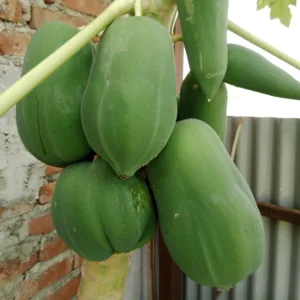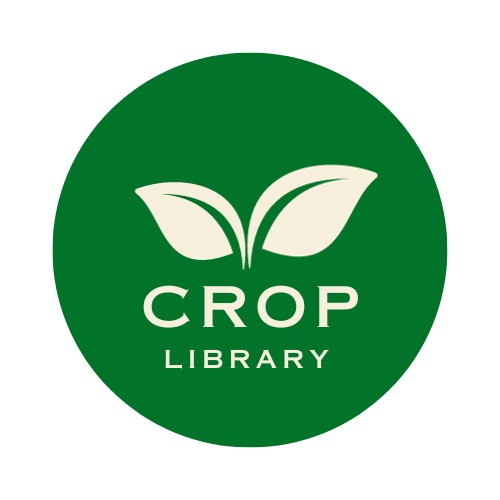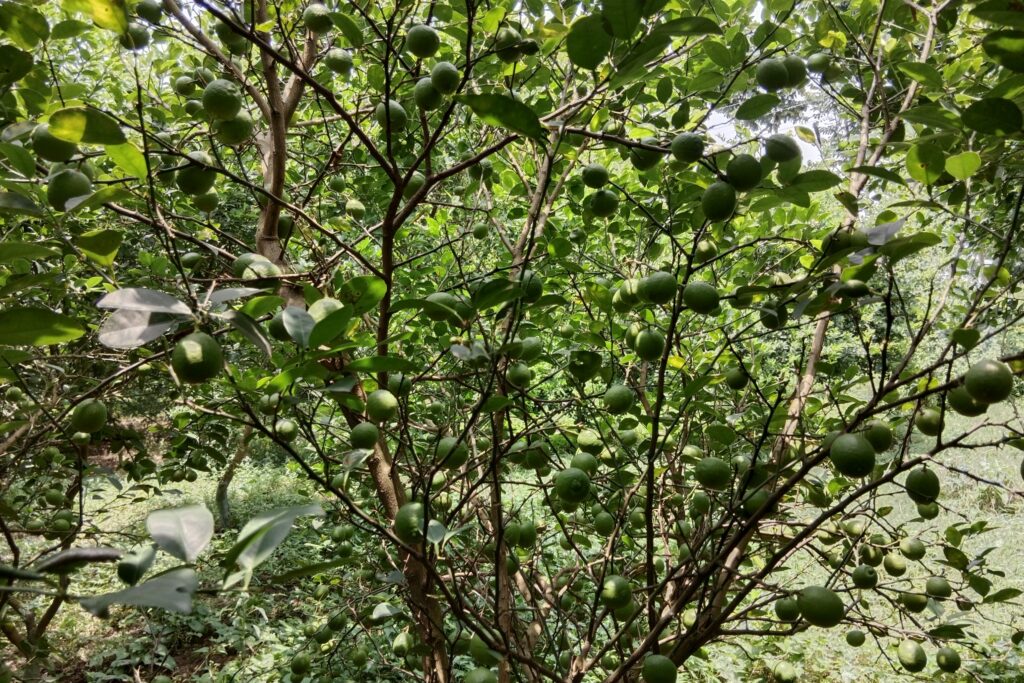The papaya (Carica papaya L.), originating in tropical America, is a widely cultivated fruit crop in tropical and subtropical regions. Due to their early fruiting and compact size, the best fertilizers for papaya should be used whether they are cultivated commercially or in home gardens.
Applying complete fertilizers before planting papaya seeds is unnecessary because the young seedlings can initially utilize nutrients stored within the seeds. Directly placing soluble fertilizers in the planting hole might damage roots, increasing susceptibility to root rot. When mixed with the soil, slow-release fertilizers usually don’t cause root burn.
Papayas, a significant fruit crop globally, are primarily grown from seeds, which show considerable variation in germination and seedling development. With a short lifespan and rapid growth, papayas have a succulent, flavorful fruit, making them the third most commonly grown tropical crop worldwide.

There are three sexual types of papaya plants: female, male, and hermaphrodite. Climacteric fruits, produced continuously by mature plants, differ between female and hermaphrodite plants and are extensively commercialized.
Papayas are large, fast-growing perennial herbaceous plants. Although they thrive in slightly acidic sandy loam soils, they can be grown in various soil types, including volcanic, sandy loam, and heavy clay.
At harvest, papaya plants remove 305 kg/ha of nitrogen (N), 103 kg/ha of phosphorus (P), 524 kg/ha of potassium (K), 327 kg/ha of calcium (Ca), and 183 kg/ha of magnesium (Mg).
Nine Best Fertilizers for Papaya
Azospirillum
Azospirillum, a bacterium with nitrogen-fixing capabilities, is recognized for its role in enhancing plant growth. It is extensively researched as a rhizobacteria that supports plant development by fixing nitrogen and producing phytohormones. The presence of Azospirillum in the soil aids in nitrogen fixation, making it accessible to plants. This increased nitrogen supply is crucial for boosting the synthesis of chlorophyll, amino acids, proteins, and nucleic acids, thus enhancing chloroplast structure and promoting better photosynthetic activity.
Apply @ 20 grams per plant at planting and six months after planting.
Phosphorus Solubilizing Bacteria (PSB)
Phosphobacteria are essential for papaya cultivation as they boost the availability of phosphorus in the soil. Phosphorus is crucial for papaya’s growth and is particularly important during flowering and fruiting. Phosphobacteria help by making phosphorus more soluble, aiding papaya plants in better root growth, flowering, and fruit formation. This leads to higher yields and superior fruit quality. Moreover, phosphobacteria contributes to soil fertility and health, supporting sustainable papaya farming methods.
Apply @ 20 grams per plant at planting and six months after planting.
Mycorrhiza
Mycorrhizal fungi form a beneficial relationship with papaya plants, aiding in nutrient uptake, water absorption, disease resistance, stress tolerance, and soil improvement. Through their extensive hyphal network, these fungi enhance the plant’s access to essential nutrients like phosphorus, potassium, and nitrogen, crucial for growth and fruit development.
The Mycorrhizal fungi can enhance plant uptake of macronutrients from soil through hyphal scavenging of soil volumes that are not accessed by roots. They also improve water uptake, helping papaya plants withstand drought conditions. Furthermore, mycorrhizal fungi bolster the plant’s defenses against soil-borne pathogens, promote stress resilience, and enhance soil structure, ultimately fostering healthier papaya growth and increased productivity in agricultural settings.
Apply @ 20 grams per plant at planting and six months after planting.
Vermicompost
Vermicompost is reported to have bioactive principles that are considered to be beneficial for root growth and result in higher germination, enhanced growth, and development. Earlier studies on papaya also indicated the beneficial effect of vermicompost as a potting mixture which enabled close contact between seed and media thus maintaining a steady moisture supply, facilitating root respiration9, and encouraging overall growth of the seedling.
Apply @ 5kg per plant at planting.
Nitrogen (N)
Nitrogen is vital for papaya cultivation, fostering healthy growth, higher yields, and improved fruit quality. It fuels leaf development, enhancing photosynthesis for energy production. Adequate nitrogen ensures abundant, flavorful fruits while fortifying plants against stressors like drought and pests. It sustains soil fertility, crucial for prolonged cultivation.
However, excessive nitrogen can lead to issues such as excessive foliage and delayed fruiting. Thus, maintaining a balanced nitrogen supply through appropriate fertilization and organic soil enrichment is key for successful papaya farming, ensuring optimal growth, yield, and resilience of the crop.
First application @ 110 grams per plant three months after planting and then at 2-3 months intervals.
Phosphorus (P)
Phosphorus plays a vital role in promoting root development and activity, which in turn enhances the absorption of other nutrients. Fertilizing with phosphorus leads to higher levels of potassium in the petioles while reducing nitrogen, calcium, and magnesium contents. Additionally, phosphate fertilization specifically boosts stem thickness and the weight of petioles during the vegetative stage.
First application @ 300 grams per plant three months after planting. Then at 2-3 months intervals.
Potassium (K)
Fertilizing with potassium is crucial for enhancing fruit quality. Application of potash leads to an increase in stem thickness during the fruit-bearing stage. It regulates water movement, preventing issues like fruit cracking. Additionally, potassium facilitates sugar transport from leaves to fruits, ensuring energy for growth and ripening. It activates enzymes crucial for cell division and protein synthesis, essential for fruit maturation.
Furthermore, potassium helps maintain osmotic balance within cells, preventing fruit dehydration. Hence, ensuring adequate potassium levels through fertilization promotes healthy fruit growth, improves quality, and maximizes yields.
First application @ 80g / plant three months after planting. Then at 2-3 months intervals.
Zinc Sulphate (ZnSo4)
Zinc plays a crucial role in plant metabolism, as it is necessary for the function of numerous enzyme systems. Zinc sulfate serves as an effective and cost-efficient source of zinc among various options available. Additionally, when zinc sulfate is utilized, maximum yield per hectare is achieved, with favorable characteristics such as higher average fruit weight, increased fruit numbers, and overall enhanced fruit yield per plant.
Apply 5 g / liter water as foliar spray starting from flowering. Then at 4 monthly intervals.
Borax
Borax contains 11.36% of Boron (B). Boron generally helps in the translocation of sugar as a sugar borate complex. Its deficiency in papaya cause lumpy disease which uneven shape of the papaya and retard growth of the apical growing point. Younger leaves are misshaped, wrinkled, and often thicker. Amongst different boron carriers, the water-soluble borax is the most effective and economical source of boron to be used for applications.
Apply @ 2 grams per liter of water as foliar spray starting from flowering. Then at 4 monthly intervals.
Application of zinc sulfate (0.5%) and borax (0.1%) at 4-month intervals result in an increase in plant growth, fruit yield, and fruit quality.
How to Apply Fertilizer in Papaya?
To properly fertilize papaya trees, create a circular basin around each tree, ensuring it’s evenly spaced about 30 cm away from the stem and 15 cm deep. Next, apply the fertilizer or manure within the basin and thoroughly mix it with the soil without causing any disturbance to the roots. Immediately irrigate the area to facilitate the dissolution of the fertilizers into the soil. It’s important to take precautions to avoid direct contact between the fertilizer and any above-ground parts of the plant to prevent potential damage.
Nutrients are required during the Flowering and Fruit development phase.
The flowering and fruit development stages in papayas are crucial phases. This phase of papaya growth if fed with the right nutrients leads to an enhanced fruit set. The following nutrients should feed during these growth stages:
Flowering Stage
Phosphorus (P) becomes crucial during the flowering stage, as it supports flower and fruit development. Fertilizers with a higher phosphorus content are recommended at this stage.
Fruit Development Stage
Potassium (K) becomes essential during fruit development to support the maturation of the fruit. Fertilizers with a higher potassium content are beneficial during this phase.
Fruit Ripening Stage
While maintaining a balanced nutrient supply, reduce nitrogen levels to avoid excessive vegetative growth. Potassium remains important for enhancing fruit quality during the ripening stage.
FAQs
Q1. Is potash good for papaya?
Yes, potash is very good for papaya. Increasing the amount of potassium in papaya plants results in heavier fruits, leading to higher fruit yield per plant and per hectare. Potassium nutrition also affects the thickness of the fruit pulp. The sweetness of papaya, measured mainly by its total soluble solids (TSS) content, is significantly influenced by potassium levels. Potassium promotes sugar translocation in plants, thereby increasing sugar content and TSS in papaya fruits. Additionally, potassium nutrition significantly increases the number of leaves in papaya plants.
Q2. Is chicken manure good for papaya?
Chicken manure is a good source of essential nutrients such as nitrogen (N), phosphorus (P), potassium (K), and calcium (Ca). It typically contains approximately 0.95% nitrogen, 0.70% phosphorus, 1.02% potassium, and 1.37% calcium. These plant nutrients are critical to plant growth. Potassium improves fruit development and overall plant health, phosphorus helps with root growth and blossom creation, and nitrogen encourages the growth of leaves and stems. To prevent very high nitrogen or ammonia levels from burning the papaya roots, chicken manure should first be aged or composted. When applied correctly, chicken manure can increase the fertility of the soil and give off nutrients steadily, which will make papaya plants healthier and more fruitful.
Q3. How can I make my papaya grow faster?
The following needs to be taken into consideration to speed up the growth of papaya trees:
- Make sure they receive enough sunshine—full sunlight is ideal for papaya growth.
- Water the soil regularly, but don’t overwater it, especially in dry spells. As papaya trees are shallow-rooted crops, it is important to provide proper drainage facilities.
- Regular fertilization with a balanced fertilizer strong in potassium will encourage healthy growth and fruit development.
- Pruning the dried, undesired plant portions can help promote quicker growth.



Pingback: Papaya Farming Profit Per Hectare in Nepal -